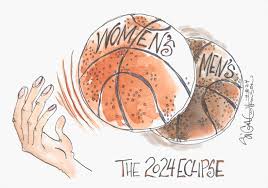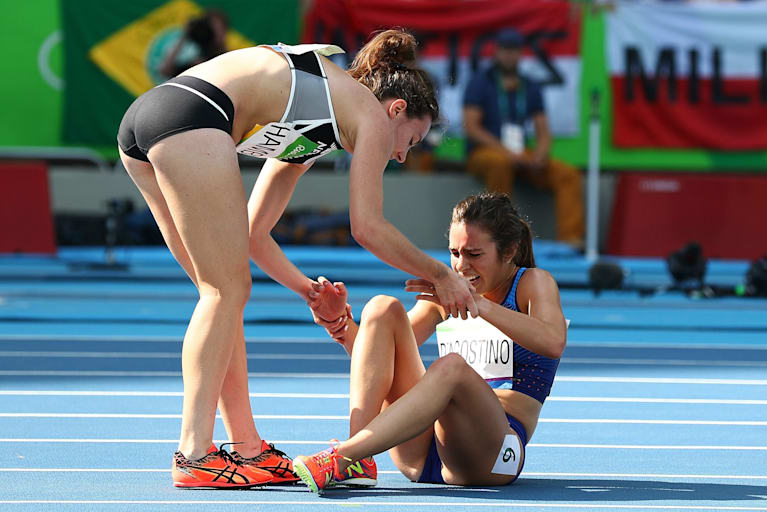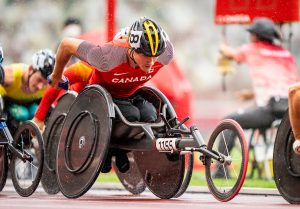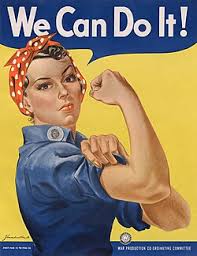1
Section One: The Fundamentals
A) What do we know about sport? What are common assumptions we make about sport and society?
| Sports promote team work and unity:
While team sports inherently require players to work towards a common objective, winning the game. This shared goal fosters a sense of collective purpose and encourages cooperation. However, in highly competitive settings, the emphasis may shift from teamwork to individual achievement. This might result in internal competitiveness, envy, and a lack of support from teammates. I have seen this firsthand given I grew up doing competitive dance. Although the teachers and students created a very inviting and a sense of a teamwork environment, there was always an underlying competition. Such as wanting to get picked to be front and center on stage or going against a teammate for a solo. But we were always told to win. Therefore, an overemphasis on winning can foster a toxic environment in which individual successes take precedence over team success. This might result in players being shunned or blamed for losses. Which is why the statement “sports promote team work and unity” might be untrue since the amount to which sports foster these types of ideas is determined by a number of factors, including the sport itself, the level of competition, the coaching style, and the general culture of the team and the greater athletic community. |
Exercise 3: Notebook prompt
What are some other metanarratives about sport that you are familiar with? Find an image or video clip or draw something yourself that captures this idea…
So what? Why does any of this matter? Does it matter? As something we grow up with – live with – play through – we don’t often interrogate the meanings of sport, and perhaps we don’t want to.
But being aware of these assumptions and metanarratives is especially important, I would argue, because of the centrality of sport to our everyday lives, the role that sport plays in shaping our childhood and worldviews and….. [finish that thought]
| A metanarrative about sport that I am familiar with is fair play and sportsmanship. I also did volleyball in elementary and highschool and our coach taught us the value of honesty, integrity, and ethical behavior during the game. I personally made an effort to show respect, humility, and grace in triumph and defeat. Even though there could have been unfairness and “rough play” throughout the game
For a variety of reasons, it is critical to investigate the concept of “fair play and sportsmanship” and the other metanarraitves. It enables us to identify the strongly held social ideals that these notions represent, such as justice, equality, and respect. It also calls into question assumptions about the generality of these values, as well as their interactions with elements such as power dynamics and cultural diversity. Understanding the underlying meaning of these principles enables us to improve our own sports experiences by becoming more conscious of our own behavior and understanding its role in creating a nice and optimistic sporting atmosphere. While just enjoying the game has its benefits, considering the ethical aspects of sport may enhance our enjoyment of both playing and watching sports events.
But being aware of these assumptions and metanarratives is especially important, I would argue, because of the centrality of sport to our everyday lives, the role that sport plays in shaping our childhood and worldviews and….. How these narratives can either reinforce or challenge existing social inequalities. For example, female athletes who thrive and want to pursue in typically male-dominated sports defy gender preconceptions and encourage young girls to follow their dream. |
B) What is social justice?
Exercise 4: Padlet Prompt
Think back to the last section and try to look at some of the ideas we discussed differently. How might sport and social justice actually co-exist?
Record any images, video clips, or gifs you added to the padlet and identify a point of intersection between sport and social justice (can be an issue or a barrier or a debate or something you would like to explore in more depth in this course) . Screenshot or paste in your response below.
| Accessibility and inclusiveness include making sports inviting and available to people of all abilities, socioeconomic positions, genders, and cultural backgrounds. It entails removing physical, institutional, and social barriers to participation. There is a lack of accessible facilities and equipment. The visibility of adapted sports is limited. There is a stigma associated with disabled athletes. The Paralympic Games focus on top athletes with impairments, giving a global platform for awareness and activism. Therefore specifically relating this to this class, accessibility and inclusion in sports are more than just notions; they are required to create a truly equal and diverse sporting environment. Sports, by breaking down physical, economic, and societal barriers, may be a powerful vehicle for empowerment, representation, and social change.
|
C) Social Justice Reading
(note: this activity is optional!)
D) KINESIOLOGY AND SOCIAL JUSTICE
Exercise 5:
Exercise 6:
What are the implications of bodies-at-risk discourse and the refusal to understand the health gap from a social justice perspective, according to the authors of this article?
| According to Harrison et al., relying on the dominant bodies-at-risk discourse circulated by today’s public health agenda, marginalized groups are blamed for their failure to comply with majorized health norms and physical activity guidelines, and thus, they have increasingly become the problem, the target, and the solution of research interventions. It unintentionally lays the burden for health difficulties on people within marginalized populations, rather than addressing the core reasons of these inequities, such as poverty, discrimination, and lack of access to services. furthermore, it ignores the wider social and economic elements that produce and sustain health disparities, such as systematic racism, poverty, and lack of access to excellent healthcare and safe surroundings.
|
Section Two: Sport Feminism
Exercise 7: Notebook Prompt
What is feminism? What does it mean to you? Choose one of the images below and explain how it captures your understanding of feminism (or find one that does speak to you and paste this into your pressbook with an explanation of why it matters to you.
| Feminism is a social and political movement that promotes equality in all areas of life of all genders. Feminism is important to me since I experience it myself. I am currently in my fourth year last semester at Trent University and my next chapter is finding employment opportunities, and generally just figuring out my place in the world. Seeing the unequally and the workforce being a male-dominated field, it is quite terrifying thinking about my future. However, for me to advocate for gender equality implies standing up not only for myself, but also for future generations of women and girls.
The first thing I notice about this image is the women showing off her muscles. Representing a lady with powerful, muscular arms, which are often associated with men. This challenges the assumption that women are physically weaker or less capable than males. This photo was released in the World War II era which was a tough time to be a women. Although this photo acts as a historical reminder of women’s power and determination, as well as their capacity to question established gender norms and contribute to society change.
|
Exercise 8: Notes Prompt (optional)
NB: Cornell notes is a great resource that teaches effective notetaking. Unfortunately, our system can’t save notes taken in the H5P app, so this is fully optional.
Exercise 9: Crossword Activity
Exercise 10: Padlet Prompt

|

| I definitely feel like the landscape of women’s sports is changing. More and more fans are turning in to watch women’s games, and the quality of play is gradually rising. This is caused, in part, to an increase in the number of exceptional young women participating in high-level sports. It is partly due to the increasing media coverage of women’s sports, which helps to create awareness and generate interest. I believe this is a long-term phenomenon. Young girls need role models to look up to, and women’s sports give that chance. People do care about women’s sports since it gives a sense of hopefulness and encouragement to many female athletes.
|




